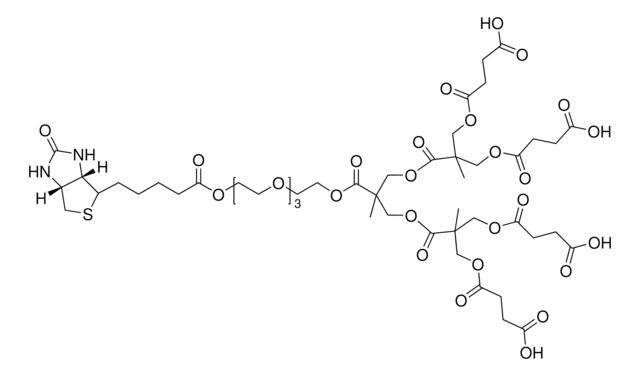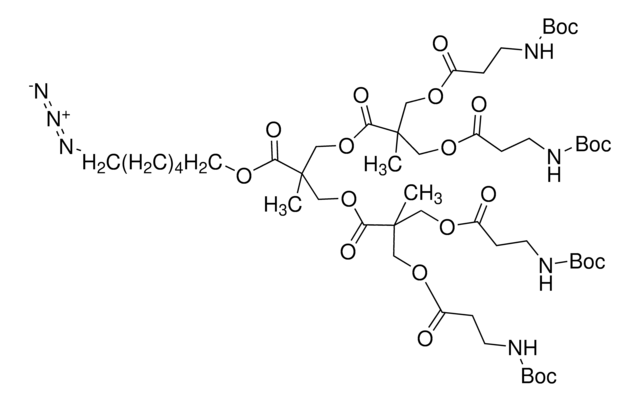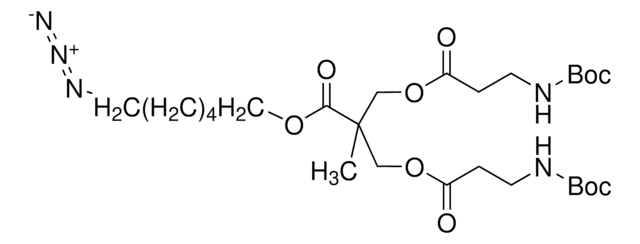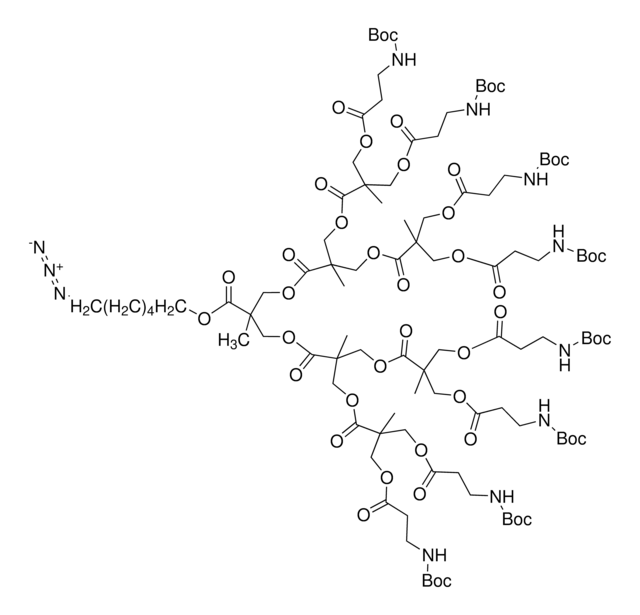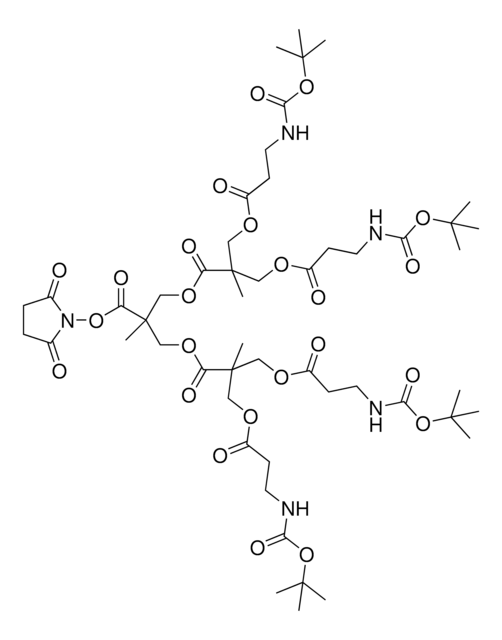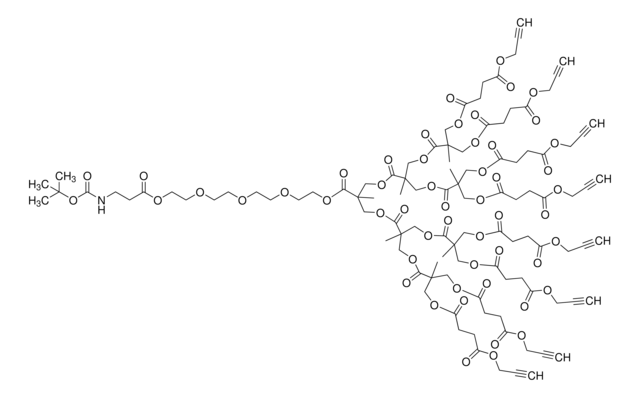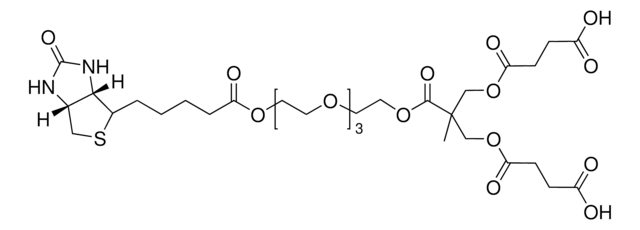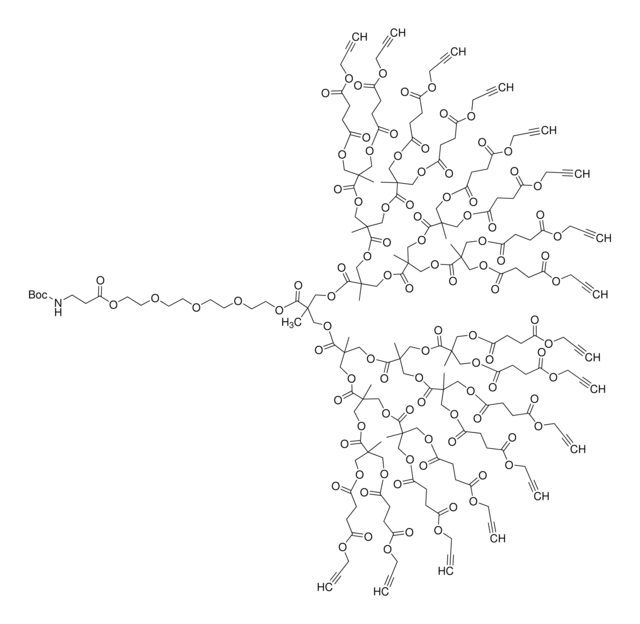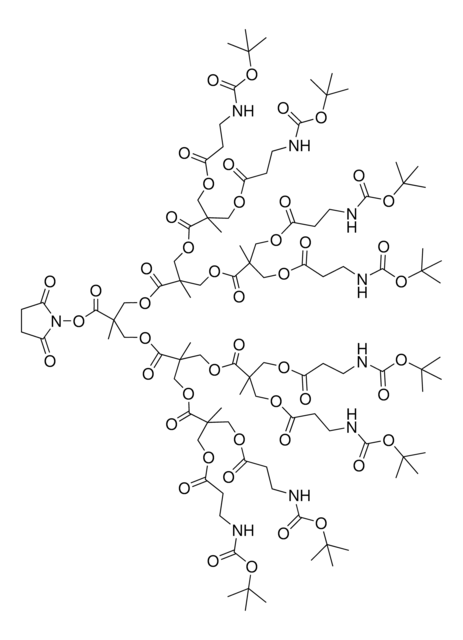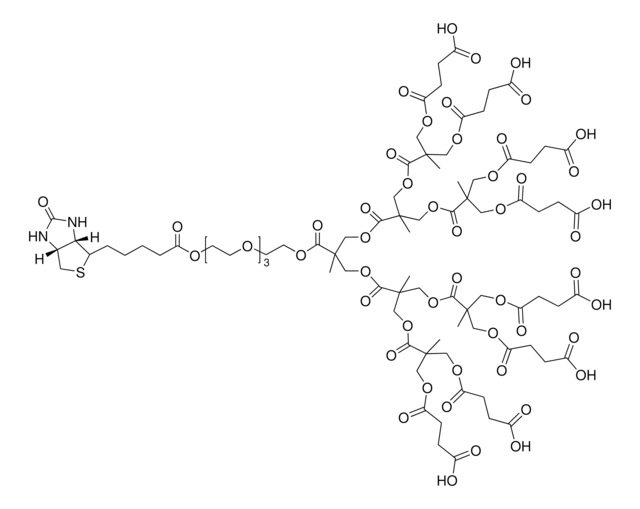911569
Polyester bis-MPA dendron
no. Surface Groups 4, NHBoc, 1 Biotin (core), generation 2
Synonym(s):
Biotin-NHBoc dendron, Bis-MPA dendron
About This Item
Recommended Products
form
solid (Viscous)
mol wt
generation 2
no. Surface Groups
4
color
colorless to white
storage temp.
−20°C
Related Categories
General description
- Polymer architecture: Dendron
- Generation: 2
- Core functional group: Biotin
- End Group Functionality: NHBoc
- No. Surface Groups: 4
- Calculated Mol. Wt.: 1453.7 g/mol
- bis-MPA = 2,2-bis(hydroxymethyl)propionic acid
Application
wgk_germany
WGK 3
flash_point_f
Not applicable
flash_point_c
Not applicable
Certificates of Analysis (COA)
Search for Certificates of Analysis (COA) by entering the products Lot/Batch Number. Lot and Batch Numbers can be found on a product’s label following the words ‘Lot’ or ‘Batch’.
Already Own This Product?
Find documentation for the products that you have recently purchased in the Document Library.
Articles
Professor Michael Malkoch provides an overview of the unique properties of dendritic molecules and their application in biomedical fields. He highlights bis-MPA dendritic scaffolds as a promising biodegradable and biocompatible platform for drug delivery applications
Our team of scientists has experience in all areas of research including Life Science, Material Science, Chemical Synthesis, Chromatography, Analytical and many others.
Contact Technical Service